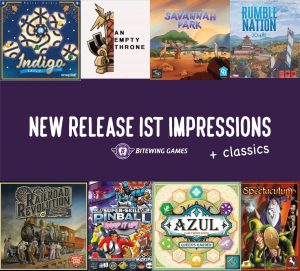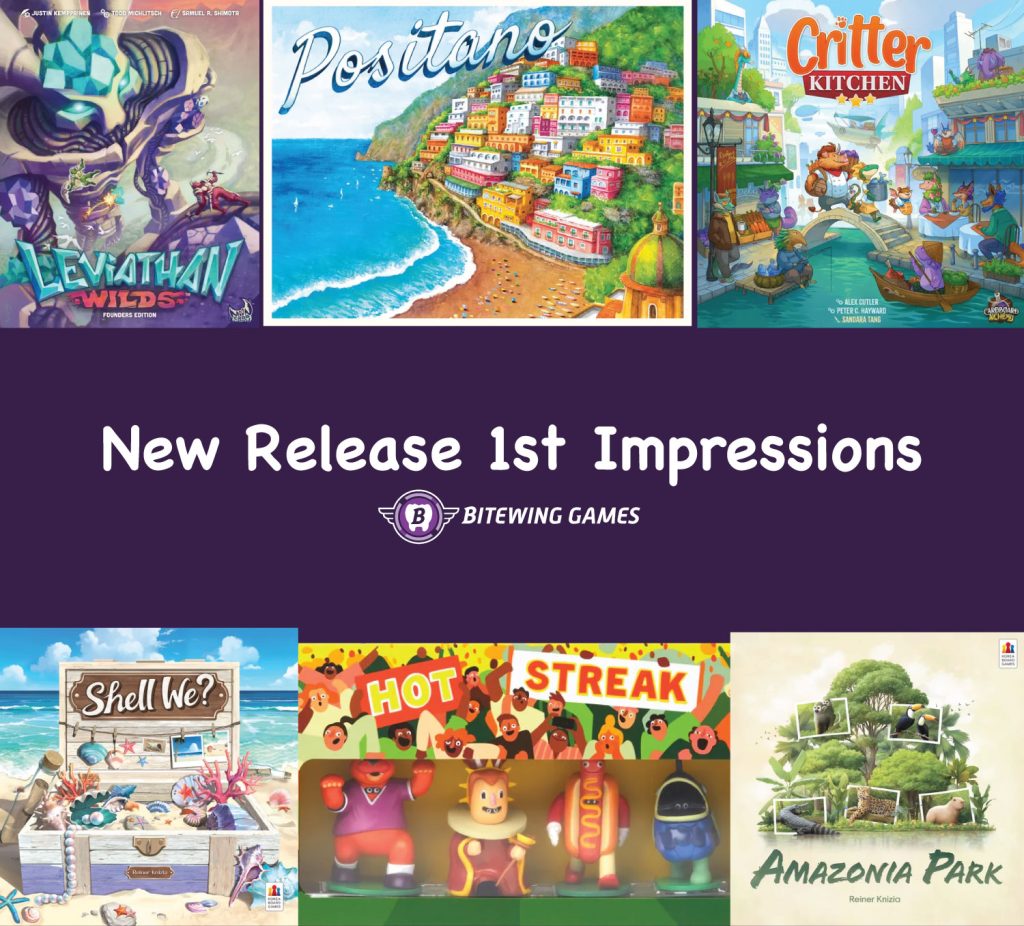
Leviathan Wilds
:strip_icc()/pic7976770.jpg)
5 Plays (2-3 Players)
Cooperative games can be pretty hit or miss for me. They take the dynamic experience of competing with another human for strategic supremacy and replace it with a cooperative challenge of solving a puzzle. Sometimes the puzzle is too simple or repetitive that it quickly grows old as you find yourself approaching it with the same strategy every time. Other times the puzzle overcompensates for this problem by layering complex and exhausting systems on top. My sweet spot is somewhere in the middle — not too taxing to feel like work, but challenging and varied enough to keep me on my toes.
My favorite cooperative games tend to be the ones with smooth gameplay, tough decisions, a sprinkling of surprises, and a heaping of variety. This would include games like The Crew, MicroMacro, Sky Team, and So Clover. Indeed, these are all “light-weight” in complexity. I can’t remember the last time I fell in love with a “medium-weight” cooperative game. So it’s a very pleasant surprise to find myself five plays into Leviathan Wilds and hungry for more of this big box and big boss goodness.
If you’re familiar with Shadow of the Colossus, then you’re not too far off from what Leviathan Wilds is trying to accomplish. The mood of this board game is less… dark… than its video game inspiration. Each session your team of adventurers will encounter a gigantic creature and begin the process of climbing this mammoth and purging it of poisonous gems. Despite your good intentions, these leviathans aren’t having any of it, so they’ll spend the entire game trying to smoosh you like the pesky ants you are. Each turn the active player will reveal a threat card (a telegraphed attack from the leviathan), play a card for its action points, and then spend those action points to do things like climb, jump, glide, dodge, strike a gem, rest, recover, and more — all before the leviathan’s attack lands.
You’ll have a couple spare cards in hand that you can play at any time for their unique ability that always help you and frequently can help your teammates. I love how much flexibility this cooperative system provides — you can literally play a card at any time, whether it is your turn or not, when it is most suitable. The private hands prevent too much quarterbacking from any players that are inclined to such tendencies. You can also pick up helpful mushrooms on the colossi and toss them to nearby players at any time for a powerful bonus ability.
The use of space and gravity is also quite interesting in Leviathan Wilds. Just like in real life, it’s much easier to go down than go up. Scaling the Goliath from bottom to top generally takes several turns, and it’s even slower if you are doing other actions along the way. Conversely, you can choose to let go at any time and start falling straight down and won’t stop unless you hit a ledge or play a card with an anchor ability. You can also use the glide action to fall with style, meaning you can move laterally as you drop in altitude to help you reach a desired location on the beast. These movement rules allow you to play strategically and often skip the low hanging fruit on a turn where your hand is great for quick upward traversal and not so good for striking nearby gems. But like any good cooperative game, you’ll be forced to juggle a lot of priorities including your grip. If your draw pile ever runs out, then you lose your grip on the leviathan and start falling immediately which can be very punishing if there is no ledge to stop your descent back to square one. It helps to navigate to ledges and rest along the way to make sure your draw pile doesn’t get too low, or you can simply choose not to draw your last card and hope the leviathan doesn’t force you to discard it before your next rest action.
The turns play smoothly and the objective is equally simple. The beast is riddled with dice of various values that you’ll need to strike down to zero in order to come away victorious. Meanwhile, you’ll be taking a battering when you finish your turn and the leviathan takes a swipe at you or your friends. Health is at least easy to recover, you just don’t want to let it drop too far because you’ll also be gaining blight (which is much harder to recover from), and if your health and blight trackers cross then you are cooked… well, nearly cooked. Your teammates will have one last turn to try and complete the objective before you all lose. In one of our plays, we had a teammate sacrifice herself with one last mighty blow — succumbing to blight but taking out the highest gem and giving us one last turn to take out the remaining gem and win the game. It was awesome.
While the game has a solid core ripe with challenging objectives and thrilling decisions, its greatest strength might just be the sheer amount of variety on display. The spiral bound book of leviathans boasts 17 monsters with unique layouts and threat decks. The player decks are further seasoned with a whole slew of characters and classes that allow for all kinds of juicy combinations. If that’s not enough, then there is already an expansion with even more content goodness. Best of all, Leviathan Wilds is approachable enough that I’ve been able to teach it to four different groups all while exploring a different leviathan and player deck every session. This would be a much harder game to dig into if I was locked into the “intro” setup until I found a regular group for it.
I’ve only lost once so far, but we immediately reset that particular game and scraped out a thrilling win on our second attempt thanks to an improved strategy. But all of my plays across several leviathans and decks have been a blast. I’m eager to see what challenges await next.
Prognosis: Excellent
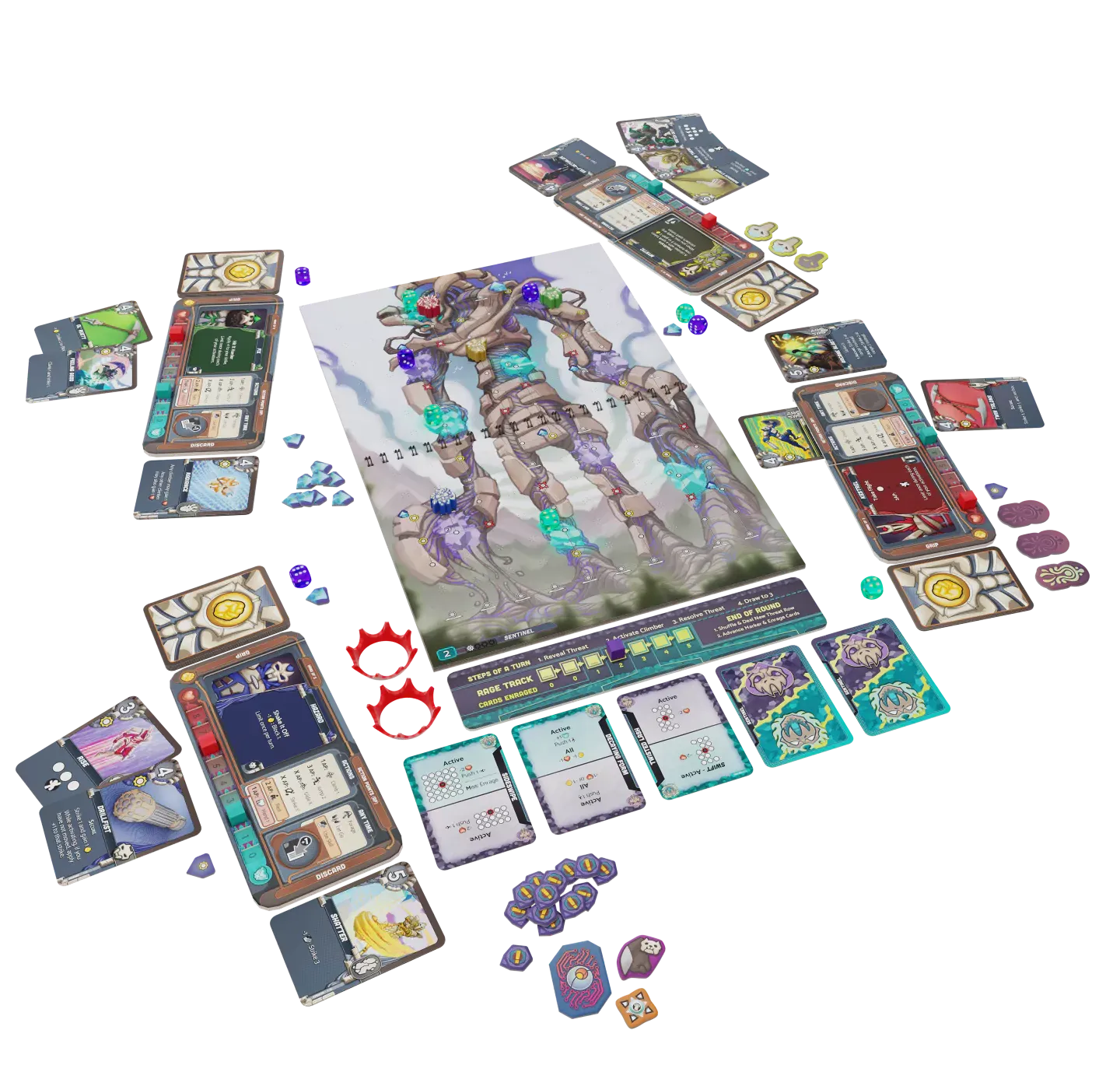
Positano
:strip_icc()/pic8281271.png)
2 Plays (4 Players, 5 Players with the Expansion)
Positano caught my attention immediately when I heard it was a mean, quick, and pretty auction game. It features an eye-catching production with nice chunky buildings and rooftops that stack together well (similar to Tower Up). It has a bit of The Estates vibe where you are bidding to put out buildings, and your efforts at one tower can be rendered obsolete by the scheming of an opponent. Yet Positano is not nearly as brutal as The Estates — there’s bonus point gelatos to be enjoyed and variable objective cards to be pursued.
The central mechanism of Positano is found in the simultaneous bidding that takes place each round. Players are bidding for first dibs on three different rows of tiles. You’ll commit to a combination of two cards — a three-tiered bid plus a modifier. You’ll be forced to prioritize one row of rewards over another, as most the cards are some combination of high, medium, and low bids. The three rows offer specific lots, a number of blocks to replenish your supply, and a quality of rooftop (plus other benefits). The basic objective is to build tall towers with high quality rooftops which increase your tower multiplier. But only the levels that have a seaside view (that aren’t blocked by the towers of in front of yours) will be worth points. So the challenge is to time your high bids in the most critical rounds for your strategy and hope you claim your desired rewards, all while managing your supply of building blocks.
In both plays, I opted for a strategy of building a couple maximum height and maximum quality towers as my point whales, and then defending the spaces in front of them so they aren’t too blocked in the final scoring. This worked quite well. Even with the unique objective cards between each play and the ability to combine bidding cards and modifiers in different ways, both plays felt pretty similar. Because the bidding cards are restricted to exact values and all player hands are the same, you’ll never see a player go unexpectedly high or low on an auction. It’s very much an auction game with the safety bumpers up, for better or worse.
I do appreciate that Positano plays rather quickly, although it’s hard to think of it as a “filler” game with a box that is so necessarily large to hold the chunky pieces. While I enjoyed both plays of Positano, I’ve tried so many different auction games at this point that the bar is high for me to really love one. I’ve got smaller, faster, and spicier options that can satiate my appetite for a filler auction game (see High Society, Ra, For Sale, Hot Lead, Conic, and Money… to name a few). But I had a pleasant enough time and wouldn’t mind visiting this Italian Village again someday.
Prognosis: Fair

Critter Kitchen
:strip_icc()/pic7594267.jpg)
1 Play (5 Players)
Critter Kitchen is the latest release from publisher Cardboard Alchemy (Flamecraft, Andromeda’s Edge) and designers Peter C. Hayward (Things in Rings, That Time You Killed Me)and Alex Cutler. While I’ve only tried a few other games from Peter (nothing from the other creators), his designs are always interesting so I was happy to dig into the kitchen of critters.
Immediately we were surprised to see just how much table space this game took up. You have 7 location boards lined up beneath a long central board sitting beneath a row of cards surrounded by large personal player areas of cards and boards and screens and tiles. A large table is a must. Fortunately, these many components are vibrantly decorated by Sandara Tang’s art (same artist as Flamecraft) and fantastical world. She definitely put the “critter” in Critter Kitchen.
But aside from a lot of end-game scoring objectives, this one is rather easy to get into. The standout moment of Critter Kitchen comes in the mad dash for ingredients which happens every round. Players secretly select three different locations to send their chefs to, and they desperately hope that nobody else picked those same locations. Supplies at each site are limited, and if everybody shows up to the same place then most folks will come away empty-handed (save for a consolation soup).
Your smallest chef has top priority, but it only gets to claim one ingredient, while your largest chef goes last in the picking at a location, but they get to take a whopping three ingredients when it is finally their turn (assuming there are still three or more ingredients left to claim). So the entire crux of the game lies in predicting your opponents’ moves and then outfoxing them for the best ingredients. It’s the kind of competitive interaction that I love to see in a literal recipe-fulfillment game.
As the rounds progress on, more key recipes will be revealed, and your objective is to collect the right ingredients and create the highest valued meals possible to earn those precious stars (points). This objective largely occupied everybody’s attention throughout our first play. But it turns out that our group should have been prioritizing the end game scoring much more, because this proved to be the far more lucrative strategy.
During the game, I accumulated a mere 8 points from preparing 4 modest meals from the 6 recipe cards. While the end game scoring was more out of sight and out of mind for the group, I was banking on this being my big breakthrough. I made sure to look at all the hidden cards (information that you can select to learn instead of taking ingredients) and then build my strategy around those objectives plus others. There are also points to be gained for preparing the best dish of each type (basically claiming and saving the best ingredient of each type for the end of the game) among a handful of other final awards. This all took my score from 8 points to nearly 40 while the rest of the group averaged a final score in the 20s.
I highlight this example not to peacock my prowess in the kitchen, but to merely to illustrate that the game perhaps doesn’t do the best job focusing everyone’s attention on the most important scoring opportunities. But this is by no means a critical flaw. Everybody (myself included) had a great time jockeying for ingredients, despite the end result. Critter Kitchen provides plenty of highs and some frequently funny lows, so that’s a win in my book.
Prognosis: Good
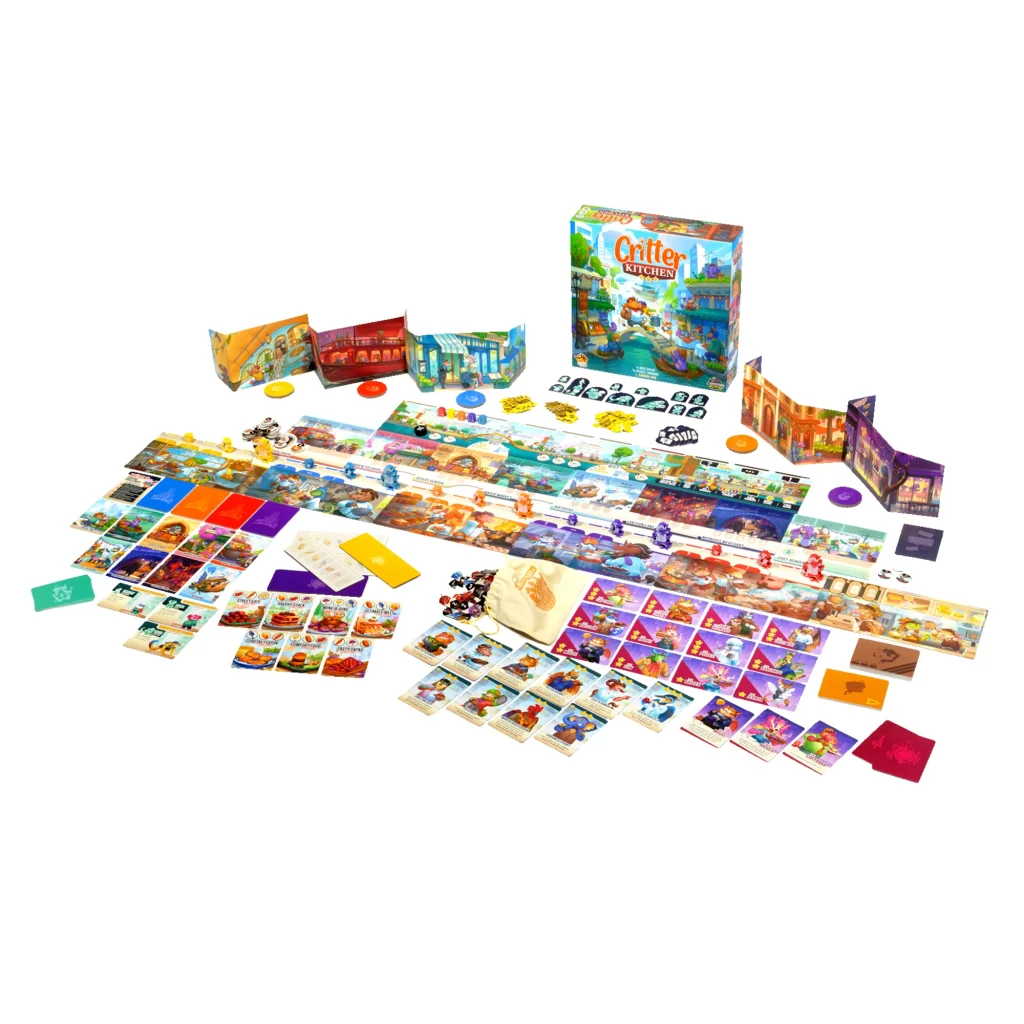
Amazonia Park
:strip_icc()/pic8394794.jpg)
1 Play (4 Players)
Review copy provided by the publisher
Korea Boardgames is an obviously foreign publisher that has really jumped onto my radar lately due to their sudden output of family-weight Knizia strategy games. In only the past year they’ve cranked out a new version of Indigo (now Butterfly Garden with a spicy new mini expansion and an English localization from Capstone Games) plus two brand new Knizias — one of those being Amazonia Park. This 30-minute competition of wildlife photography is… you guessed it… a tile placement game on a shared board.
Like many family-weight Knizia strategy games, this one is highly tactical and provides some clever scoring twists. On your turn, you’ll either take a picture or publish an article. In board game language, that translates to place a tile to earn tokens or cash in your tokens to earn a scoring card. Players are racing to collect all six colors of cards first, and each color of card becomes more expensive to claim as opponents snatch them up. If you’re the first to publish a blue article, it’ll only cost you five blue tokens. The next person will have to pay seven, then nine, then a whopping eleven. And depending on the board state, blue tokens might be extremely hard to come by.
When placing a tile onto the square grid board, you’ll look in all four directions for the first tile in line of sight (if there is one). Those visible tiles will each net you one to three tokens of their respective color. So the good spots are obvious, and the tile you put out might set up your lefthand neighbor for an even better turn.
Thanks to the victory objective of collecting all six card colors and the obvious state of everyone’s progress, you’ll try to block your opponents from getting their desired colors too easily. But you can only do so much when you are forced to place out the only tile in your hand and then draw another one for your next turn (much like Carcassonne).
There is some nice tension between lunging for tempting spots and cashing in your tokens before that card type becomes more expensive. Yet the most expensive cards grant you a welcome bonus like a free token of your choice or a permanent discount on all future cards. And if you can’t catch a break getting the color you need, you can always spend two tokens of one color as if they were one token of any other color.
Overall, it’s solid stuff from the good doctor, as expected — a game that flows nicely and doesn’t overstay its welcome. But as a heavily tactical game with fairly obvious decisions, it’s hard to shake the feeling that Amazonia Park has nothing else to show after only one play. Sure, repeat groups could get a little better at ganging up on the leader, but I’m not seeing much potential for strategic exploration or discovery here. This one is best suited as a light and casual filler, yet it lacks personality.
I wouldn’t be opposed to playing Amazonia Park again, but I’m much more opposed to keeping it on my shelf and hauling it to game night. In terms of the box size to gameplay experience ratio, Amazonia Park is one of the worst offenders I’ve seen in a very long time. Yes, it even puts publisher Piatnik’s Trademark Big Boxes of Air to shame. How bad is it, you ask? Well, let’s put it this way: Amazonia Park is the second largest box in my entire Knizia collection of over 125 games. The only game that edges it out is Siege of Runedar, and that’s because Runedar uses its box as a physical castle complete with walls, towers, and courtyards.
Amazonia Park has no excuse for being so large… or at least not a good excuse. Most of the space in this box is devoted to two completely unnecessary components: a card stand and a tile rack. Sure, it’s convenient to have a spot to fit these giant punchboard stands so you don’t have to disassemble them after play, but their very existence feels wasteful. The cards could easily lay flat next to the board, and the tiles could be made into a few simple stacks. Remove these two stands and the box could probably be 85% smaller.
If you’re going to be a light gaming snack, it’s much better to hide the empty calories in a smaller package and behind a facade of variability.
Prognosis: Poor
:strip_icc()/pic8394795.jpg)
Shell We?
:strip_icc()/pic8616448.jpg)
2 Plays (2 and 4 Players)
Review copy provided by the publisher
The other recent Knizia release put out by Korea Boardgames is Shell We. Shell We is itself a reimplementation of an older Knizia game that adds in a few new wrinkles. That older game is 2012’s Start 11! The Board Game which itself is a reimplementation of a now 100-year-old game called Elfer Raus (notably, this original game was NOT designed by Reiner Knizia). Throughout these iterations, the objective has stayed same: your hand consists of number pieces that can be a few possible colors, and you need to empty your hand first by playing out matching colored pieces adjacent to each other (in numerical order).
Shell We introduces a bit more flair to this concept by turning your pieces into shells with printed numbers on them. On your turn you can either play up to two tiles onto their exact spaces on the board or draw two tiles and add them to your rack. The main restriction here is that you can only play tiles adjacent to other tiles, so you have to try and seed and push the board in your favor. Fortunately, players start the game by choosing one tile to seed the board with, and you can earn bonus actions later to put out stranded tiles and start a new growing chain. It’s a simple exercise of playing the right tiles at the right time while milking the bonus actions.
The other major new feature of Shell We comes in the form of bottle actions. Each session, you’ll set up the game with a unique bottle action along each row. Whenever a player puts out two consecutive tiles in the same row (10-11 or 2-1, for example), then they immediately get the bonus action. This is where you’ll find the most flavor in Shell We. One bonus lets you pass a tile to the player in the lead, another forces all your opponents to draw a tile, another gives you a bonus turn, and there are several more. In our four player game, it was amusing to see players popping off the bottle bonuses and nailing each other with negative effects. It certainly invited some light banter than I missed having in my 2-player game of it.
Despite having 100 years to refine the idea, Shell We doesn’t leave much of an impression. The gameplay is about as memorable as a sandcastle built on the wet fringes of the shore. One moment you’re playing it, putting out shells in the only spots they can go, and the next moment it is completely washed from your memory. There is almost nothing to uncover here in terms of strategies or decisions. In that regard, it certainly makes for a pleasant enough game to play with young kids or with your great aunt who simply wants something to do with her hands while she chats the evening away. At least it doesn’t come in an offensively large box.
Prognosis: Poor
:strip_icc()/pic8607451.jpg)
Hot Streak
:strip_icc()/pic8933083.jpg)
6 Plays (4-8 Players)
Does the world really need another racing and betting game when we already have the excellent Winner’s Circle, the popular Camel Up, and the recent hit Ready Set Bet? Perhaps not. So does the world need the latest challenger in this genre, Hot Streak? I submit to you, dear reader, a resounding YES.
Hot Streak takes all the wacky chaos, thrilling drama, and sinister humor from those other games and cranks things up to eleven. The racers have more personality than ever before — with uncanny eyes peeking through their mascot uniforms. The card effects are crafted to allow for unexpected twists, thrilling comebacks, and shocking defeats. The player decisions are kept to a brisk pace and sharp simplicity where the game gets out of its own way and lets players invest their attention in the race.
When the gun is fired and the racers are off, nobody has to worry about their next turn or fret over a future decision. The game is out of your hands … Lady Luck is at the wheel. Hurley the Hot Dog storms ahead of the pack. Gobbler the Bear is hot on his heels. Mum the Queen is already turned around and headed in the wrong direction. And Dangle the Fish has fallen flat on its face. You went all-in on Dangle, that blasted creature.
I’ve seen things you wouldn’t believe. One mascot takes a commanding lead only to turn around and trample a straggler as if it was a personal vendetta. Another character makes an unlikely comeback, barreling to the front of the pack only to tumble right in front of the finish line. A known loser changes their stars and wins against all odds in the final race. This is a game of laughs, groans, and cheers.
Hot Streak doesn’t care so much about putting the smartest player at the table on a victory point pedestal. It’s more about the shared experience of being degenerate gamblers in a contest of chaos. Sure, you’ll get the chance to place your bets and seed the deck before each race, but whether you win it big or gamble away your life’s savings, it’ll be a heck of a good time. With enough people (particularly 5-8 players, in my opinion), this might just be one of the best experiences that party games can provide.
Prognosis: Excellent
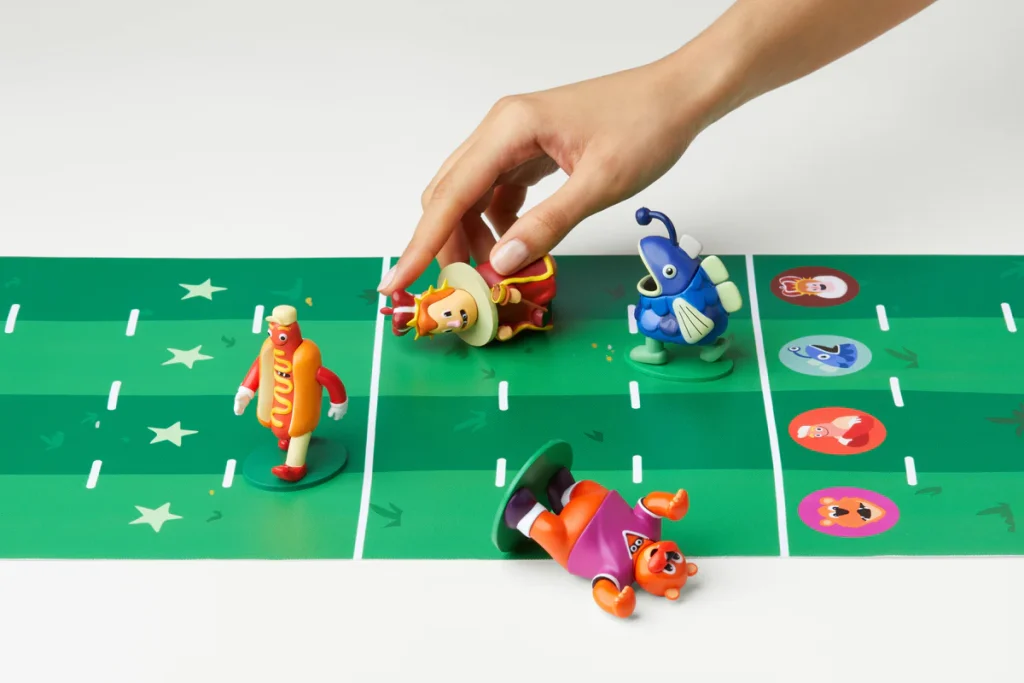
Now Available
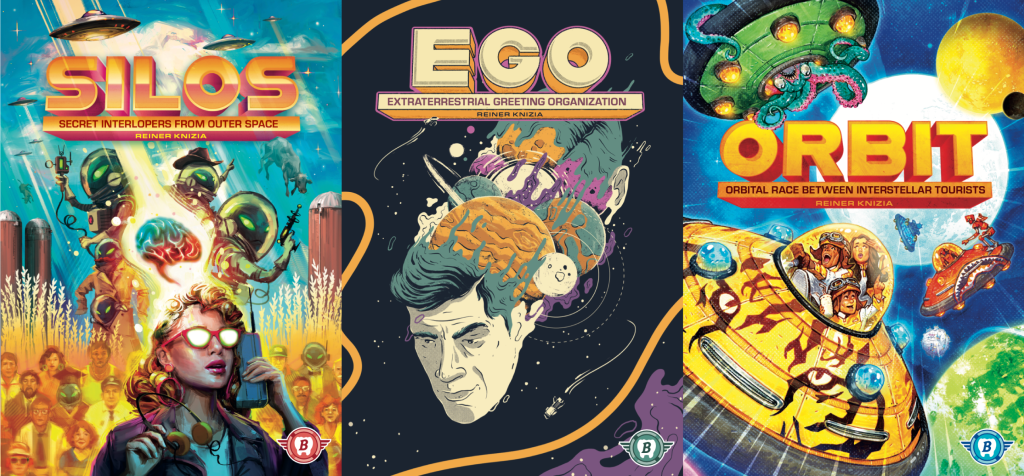
If you’d like to support Bitewing Games then be sure to check out our new releases! Our Cosmic Silos Trilogy — SILOS, EGO, and ORBIT — is now available and shipping worldwide. These three Knizia sci-fi games span very different experiences… from dramatic area control to epic push-your-luck auctions to wacky racing. Thanks for helping us make and share great games!

Article written by Nick Murray. Outside of practicing dentistry part-time, Nick has devoted his remaining work-time to collaborating with the world’s best designers, illustrators, and creators in producing classy board games that bite, including the critically acclaimed titles Trailblazers by Ryan Courtney and Zoo Vadis by Reiner Knizia. He hopes you’ll join Bitewing Games in their quest to create and share classy board games with a bite.
Disclaimer: When Bitewing Games finds a designer or artist or publisher that we like, we sometimes try to collaborate with these creators on our own publishing projects. We work with these folks because we like their work, and it is natural and predictable that we will continue to praise and enjoy their work. Any opinions shared are subject to biases including business relationships, personal acquaintances, gaming preferences, and more. That said, our intent is to help grow the hobby, share our gaming experiences, and find folks with similar tastes. Please take any and all of our opinions with a hearty grain of salt as you partake in this tabletop hobby feast.



